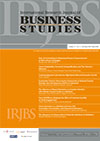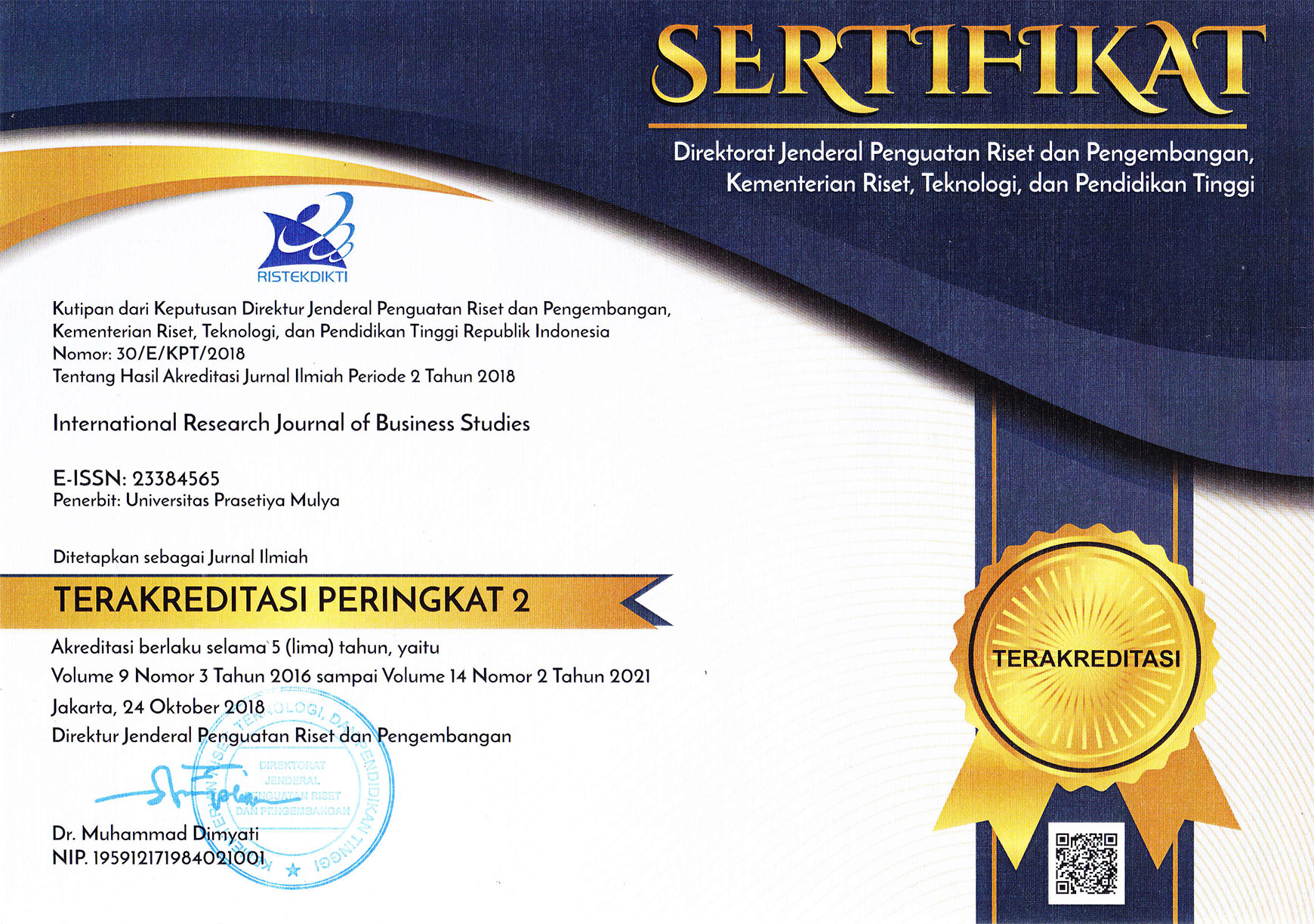Business Process Reengineering of Sustainable Teak Forest at Agroforestry Industry
DOI:
https://doi.org/10.21632/irjbs.9.3.169-183Keywords:
Forest, Deforestation, Business Processes, TeakwoodAbstract
Forest destruction both in the form of deforestation and degradation continues. Forest management on the basis of partnership with the community is also one of forest management methods to tackle deforestation. Agroforestry company has a commitment to support legal teak supplies and support teak forest afforestation. Plant breeding efforts were being undertaken all national agroforestry company and implemented in cooperation with BPPT as a partner to obtain superior
teak plants. A problem in producing a superior teak seedling is the high cost of seed production. Because of this, teak seedlings produced. Materials used for the study were obtained from questionnaires carried out by employees. The data were analyzed using descriptive analysis, structured equation model and value stream analysis tools. The results reveal that the main factors affecting the production process of teak seedlings are transportation, process, human, material and machine. The improvement of production system teak seedlings will be applied in the following order of priority: transportation with 60.8% influential level, motion with 49.5% effective level, defect with 3.8% influential level, and inventory with 2.5% influential level.
References
Bertolini M, M Bevilacqua, FE Ciarapica and G Giacchetta. (2011). Business Process Reengineering in Healthcare Management: A Case Study. Business Process Management Journal.Vol 12, No. 1, pp 42-66.
Cheung M, J Hidders. (2011). Round-trip iterative business process modelling between BPA and BPMS tools.Business Process Management Journal. Vol 17 No. 3, 2011. Emerald Group Publishing Limited.
Chandler CMD. (2007). Formulation of lean six sigma critical business processess for manufacturing facilities [dessertation]. Arlington [US]: The University of Texas.
Damij N. (2007). Business process modelling using diagrammatic and tabular techniques. Emerald Group Publishing Limited. Business Process Management Journal. Vol 13 No. 1 2007.
Doomun R, NV Jungum. (2008). Business process modelling, simulation and reengineering: call centres. Emerald Group Publishing Limited.Business Process Management Journal. Vol 14 No. 6, 2008.
Effendi R., Parlinah N. (2010). Ketidakseimbangan Distribusi Nilai tambah dalam Rantai Nilai (Value Chain) Mebel. Policy Brief, Vol. 4, No. 7, Tahun 2010, ISSN: 2085-7870.
Fauzan AU, Purnomo H. (2012). Undercovering the Complexity: An Essay on the Benefits of the Value Chain Approach to Global Crisis Studies - A Case Study from Jepara Indonesia. World Society in the Global Economic Crisis Foundation, 7-2012.
Goriwondo, William M, Samson M, Alphonce M. (2011). Use of the value stream mapping tools for waste reduction in manufacturing(Case study for bread manufacturing in Zimbabwe).Proceedings of the 2011 International Conference on Industrial Engineering and Operations Management.
Marimin. (2009). Teori dan Aplikasi: Sistem Pakar dalam Teknologi Manajerial. Bogor [ID]: IPB Press.
Maung TM, Yamamoto M. (2008). Exploring the Socio-Economic Situation of Plantation Villagers: A Case Study in Myanmar Bago Yoma. Small-Scale Forestry.(2008) 7, pp. 29–48.
Pressey KH. (2008). The Effect of Reengineering Workflow Processes At an Enterprise Service Desk [dissertation]. Capela University.
Purnomo H, Guizol P, Muhtaman DR. (2009). Governing the teak furniture business: A global value chain system dynamic modelling approach. Environmental Modelling & Software, 24 (2009) 1391–1401.
Purnomo H, Irawati R, Fauzan A, Melati M. (2011). Scenario-based actions to upgrade small-scale furniture producers and their impacts on women in Central Java, Indonesia. International Forestry Review, Vol.13(2), pp. 152-162.
Rachmadi BN. (2007).Franchising, the Most Practical and excelllent Way of Succeeding: Membedah Tawaran Franchise Lokal Indonesia. Jakarta [ID]: Gramedia Pustaka Utama.
Roda JM, Cadene P, Guizol P, Santoso LAU. (2007). Atlas Industri Mebel Kayu Di Jepara Indonesia. Bogor [ID]: CIFOR.
Roser S, Jorg PM, Bernhard B. (2011). An Evaluation and Decision Method for ICT Architectures for Cross-Organizational Business Process Coordination. Information System E-Business Management. Vol 9. Pp 51-88.
Wee HM, Simon W. (2009). Lean supply chain and its effect on product cost and quality: a case study on Ford Motor Company. Supply Chain Management: An International Journal14/5 2009, pp 335-341.
Downloads
Submitted
Published
How to Cite
Issue
Section
Categories
License
Copyright (c) 2016 Muhammad Alkaff, Marimin, Yandra Arkeman, Sukardi, Herry Purnomo

This work is licensed under a Creative Commons Attribution-ShareAlike 4.0 International License.
Journal Author(s) Rights
For IRJBS to publish and disseminate research articles, we need publishing rights (transferred from the author(s) to the publisher). This is determined by a publishing agreement between the Author(s) and IRJBS. This agreement deals with the transfer or license of the copyright of publishing to IRJBS, while Authors still retain significant rights to use and share their own published articles. IRJBS supports the need for authors to share, disseminate and maximize the impact of their research and these rights, in any databases.
As a journal Author, you have rights to many uses of your article, including use by your employing institute or company. These Author rights can be exercised without the need to obtain specific permission. Authors publishing in IRJBS journals have comprehensive rights to use their works for teaching and scholarly purposes without needing to seek permission, including:
- use for classroom teaching by Author or Author's institution and presentation at a meeting or conference and distributing copies to attendees;
- use for internal training by the author's company;
- distribution to colleagues for their research use;
- use in a subsequent compilation of the author's works;
- inclusion in a thesis or dissertation;
- reuse of portions or extracts from the article in other works (with full acknowledgment of the final article);
- preparation of derivative works (other than commercial purposes) (with full acknowledgment of the final article);
- voluntary posting on open websites operated by the author or the author’s institution for scholarly purposes,
(But it should follow the open access license of Creative Common CC-by-SA License).
Authors/Readers/Third Parties can copy and redistribute the material in any medium or format, as well as remix, transform, and build upon the material for any purpose, even commercially. Still, they must give appropriate credit (the name of the creator and attribution parties (authors' detail information), a copyright notice, an open access license notice, a disclaimer notice, and a link to the material), provide a link to the license, and indicate if changes were made (Publisher indicates the modification of the material (if any) and retain an indication of previous modifications.
Authors/Readers/Third Parties can read, print and download, redistribute or republish the article (e.g. display in a repository), translate the article, download for text and data mining purposes, reuse portions or extracts from the article in other works, sell or re-use for commercial purposes, remix, transform, or build upon the material, they must distribute their contributions under the same license as the original Creative Commons Attribution-ShareAlike (CC BY-SA).
This work is licensed under a Creative Commons Attribution-ShareAlike 4.0 International License.








